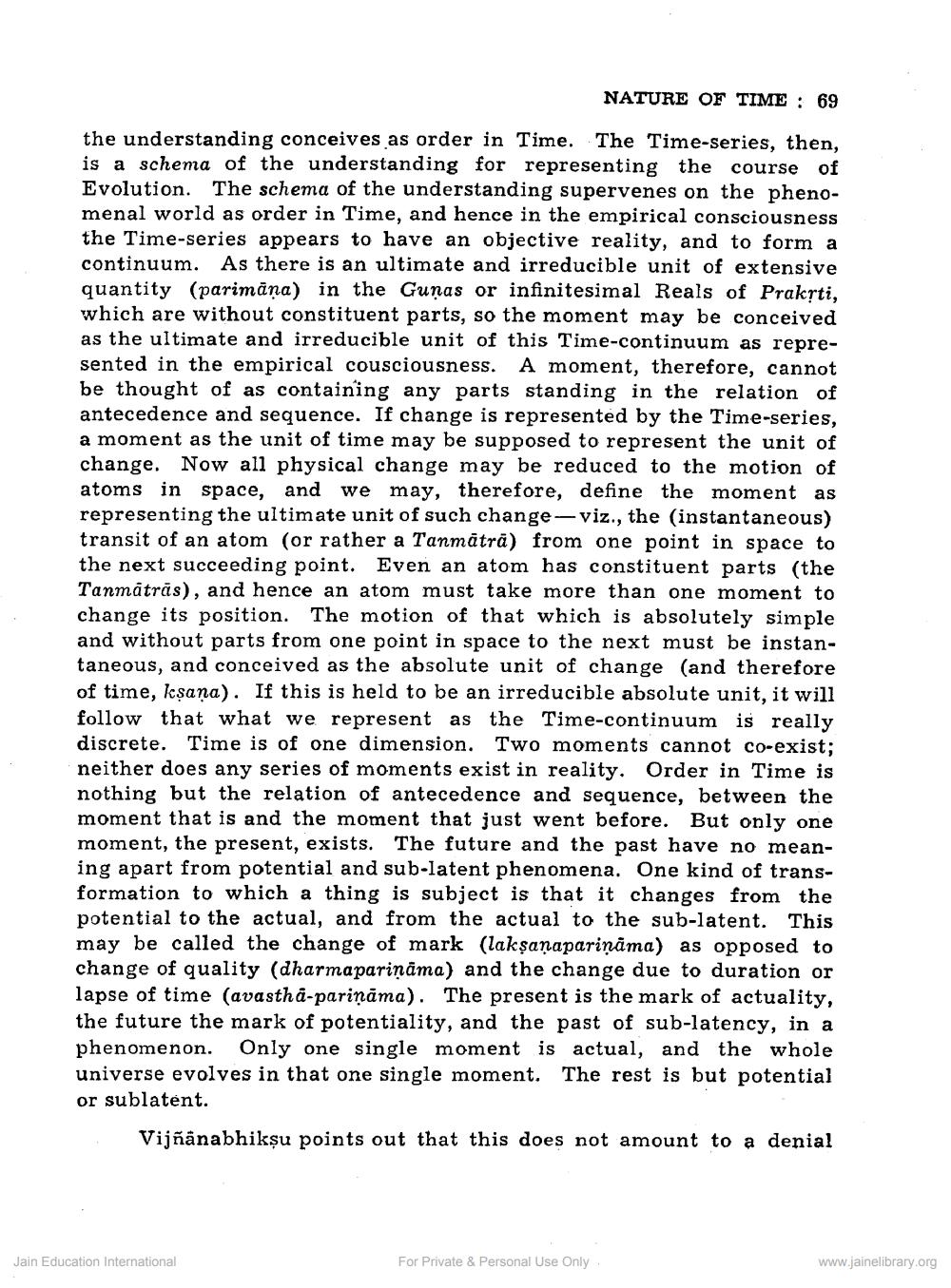Book Title: Nature of Time Author(s): Nagin J Shah Publisher: Z_Mahavir_Jain_Vidyalay_Suvarna_Mahotsav_Granth_Part_1_012002.pdf and Mahavir_Jain_Vidyalay_Suvarna_ View full book textPage 7
________________ NATURE OF TIME: 69 the understanding conceives as order in Time. The Time-series, then, is a schema of the understanding for representing the course of Evolution. The schema of the understanding supervenes on the phenomenal world as order in Time, and hence in the empirical consciousness the Time-series appears to have an objective reality, and to form a continuum. As there is an ultimate and irreducible unit of extensive quantity (parimana) in the Gunas or infinitesimal Reals of Prakṛti, which are without constituent parts, so the moment may be conceived as the ultimate and irreducible unit of this Time-continuum as represented in the empirical cousciousness. A moment, therefore, cannot be thought of as containing any parts standing in the relation of antecedence and sequence. If change is represented by the Time-series, a moment as the unit of time may be supposed to represent the unit of change. Now all physical change may be reduced to the motion of atoms in we may, therefore, define the moment as representing the ultimate unit of such change-viz., the (instantaneous) transit of an atom (or rather a Tanmäträ) from one point in space to the next succeeding point. Even an atom has constituent parts (the Tanmātrās), and hence an atom must take more than one moment to change its position. The motion of that which is absolutely simple and without parts from one point in space to the next must be instantaneous, and conceived as the absolute unit of change (and therefore of time, kesana). If this is held to be an irreducible absolute unit, it will follow that what we represent as the Time-continuum is really. discrete. Time is of one dimension. Two moments cannot co-exist; neither does any series of moments exist in reality. Order in Time is nothing but the relation of antecedence and sequence, between the moment that is and the moment that just went before. But only one moment, the present, exists. The future and the past have no meaning apart from potential and sub-latent phenomena. One kind of transformation to which a thing is subject is that it changes from the potential to the actual, and from the actual to the sub-latent. This may be called the change of mark (lakṣaṇaparinama) as opposed to change of quality (dharmapariṇāma) and the change due to duration or lapse of time (avastha-pariņāma). The present is the mark of actuality, the future the mark of potentiality, and the past of sub-latency, in a phenomenon. Only one single moment is actual, and the whole universe evolves in that one single moment. The rest is but potential or sublatent. Vijñānabhiksu points out that this does not amount to a denial. Jain Education International For Private & Personal Use Only www.jainelibrary.orgPage Navigation
1 ... 5 6 7 8 9 10 11 12 13 14 15 16 17 18 19 20 21 22 23 24 25
